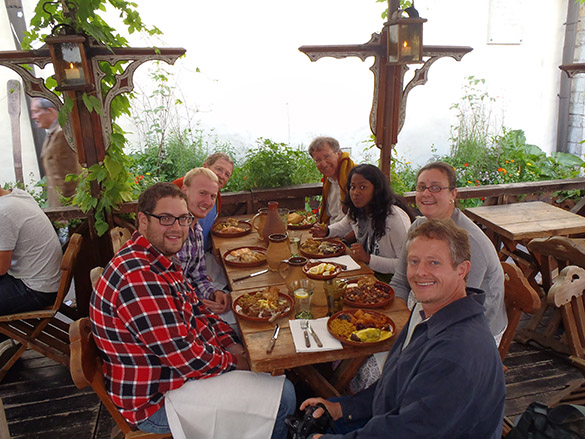 Editor’s note: The Wooster Geologists in Israel this spring wrote abstracts for the Geological Society of America Annual Meeting in Charlotte, North Carolina, this November. The following is from student guest blogger Melissa Torma in the format required for GSA abstracts:
Editor’s note: The Wooster Geologists in Israel this spring wrote abstracts for the Geological Society of America Annual Meeting in Charlotte, North Carolina, this November. The following is from student guest blogger Melissa Torma in the format required for GSA abstracts:
TORMA, Melissa, WILSON, Mark A., Department of Geology, The College of Wooster, Wooster, OH 44691 USA; FELDMAN, Howard R., Division of Paleontology (Invertebrates), American Museum of Natural History, New York, NY 10024
The Matmor Formation is a Middle-Upper Jurassic (Callovian-Oxfordian) marl and limestone unit entirely exposed in Hamakhtesh Hagadol in the Negev of southern Israel. It was deposited in shallow marine waters very close to the paleoequator in the Ethiopian Province of the Tethyan Faunal Realm. It is very fossiliferous throughout most of its 100 meters of thickness. The Matmor Formation has been well described stratigraphically, and several of its fossil groups have been taxonomically assessed (notably the brachiopods, ammonites, crinoids and sclerobionts), but there is yet no community-level analysis of the entire fauna. This work is part of that larger paleoecological project. We systematically collected from the most fossiliferous unit of the Matmor (SU 51 in the local stratigraphy; upper Callovian; Quenstedtoceras (Lamberticeras) lamberti Zone) over several kilometers. The community in this marl is dominated by abundant crinoids (a new species of Apiocrinites), rhynchonellid (Somalirhynchia and Burmirhynchia) and terebratulid (Bihenithyris and Digonella) brachiopods, echinoids (mostly rhabdocidarids), calcisponges and scleractinian corals. Mollusks, other than small attached oysters, are relatively rare, and bryozoans are represented by only a few encrusters. The fossils are concentrated in patches a few tens of meters in diameter separated from each other by featureless, unfossiliferous yellow marl. The patches share many of the same common taxa (especially the crinoids and brachiopods) but differ in the relative abundance of corals. No infauna has been found in this unit, either as trace or body fossils. The environment appears to have been a shallow water embayment with a muddy substrate. Patches of epifauna developed as shelly islands across this seafloor. Crinoids and small corals may have been the pioneers on this soft bottom, providing increasing amounts of skeletal debris to facilitate the settlement of brachiopods and other invertebrates. A periodic influx of fine sediment during storms limited the diversity of this assemblage by smothering patches under several centimeters of mud. This community was thus kept in its early successional stages by periodic disturbance.


































